-
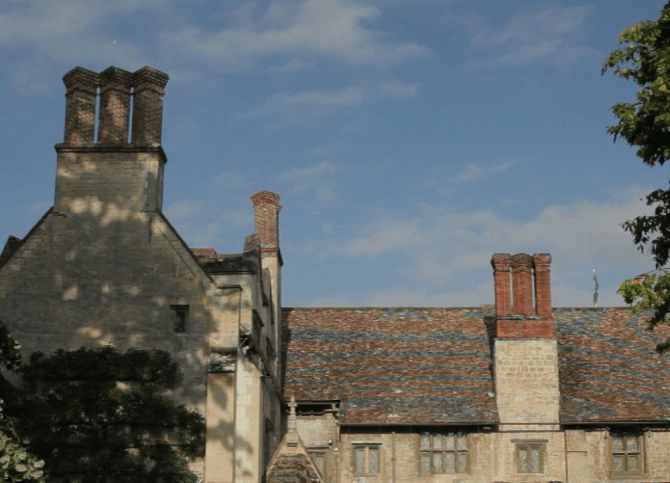
Moire hell! 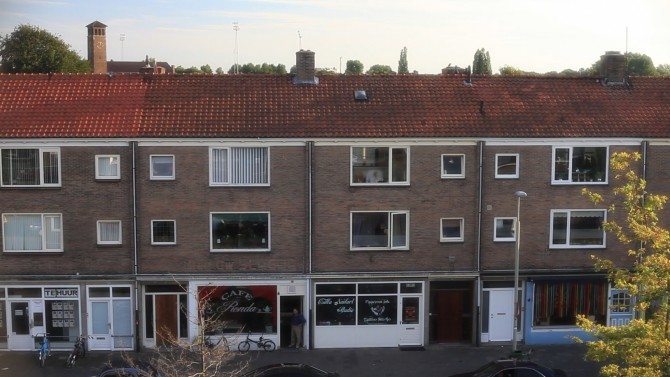
- Video grab with the Softar 1…without this would be moire hell
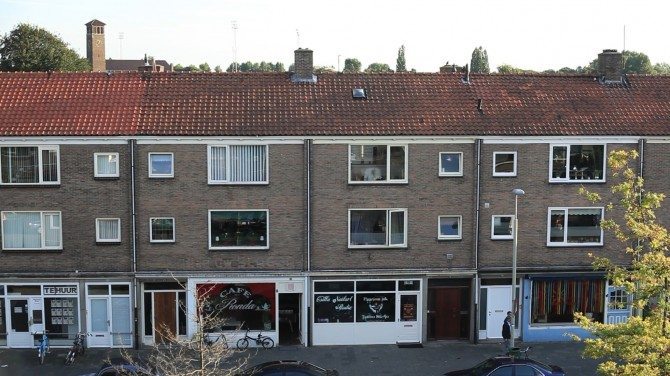
- Still photo without softar
Spencer Voss contacted me today to tell me about the success he has had with eliminating the dreaded aliasing and moire so prevalent in Canon DSLRs. He uses a softening filter made by Carl Zeiss called Softar 1,2 & 3. These differ from traditional softening filters as they retain their sharpness and are not plastic!
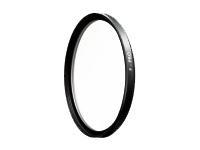
Expressing Emotion: The Zeiss Softar®
Motion picture directors of photography have been aware of it since a long time: for some applications, Zeiss lenses can be just too sharp! Close-ups of female beauties, for instance, do not really ask for maximum sharpness of every detail, do they? Instead, Hollywood’s goddesses expect to be given an aura of immaculate, radiant beauty… Introducing the Zeiss Softar®:
”Hang on to a Dream”
In the morning’s transition from a dream towards reality, when you look at the bright daylight outside the window in your darkened room, such a bright object will, for a few moments, appear with a radiant aura, a romantic glow of light around it. Like candlelight! The same visual appearance takes place, that same romantic glow shows when we look deeply into the eyes of a loved one…
Can this visual experience be expressed photographically? Today’s advanced camera lenses with their documentary, clinical, unemotional high-resolution rendering of object details do not lend themselves to supporting such emotional concepts like auras and romance and dreams. However, there has been a strong desire among photographers and cinematographers alike to add a sense of emotional warmth to some of their images.
As paradoxically as it may seem, no one has been more aware of this than Carl Zeiss. This is because Zeiss lenses are purposely designed to deliver the extreme opposite: perfect sharpness and total lack of romance. Since users of Zeiss lenses appreciate this typical characteristic for much of their work, but occasionally want to add ”dream-like romance” in a well-controlled way, Zeiss invented what we believe is the perfect solution: Zeiss Softar attachments.
Zeiss Softar attachments consist of a plane-parallel optical precision plate with tiny lenslets of varying size, randomly distributed over the surface of the plate. The optical surface is manufactured at the Zeiss Oberkochen plant with the same perfection applied to the optical surfaces of Zeiss lens elements. The quality of every single Zeiss Softar is verified on an interferometer, an optical precision measuring instrument capable of higher accuracy than any mechanical measuring device.
Unlike most softeners and diffusors the Zeiss Softar attachments are not mass produced pieces of plastic. This is why genuine Zeiss Softar attachments do not lose focus and do not produce unsharp out-of-focus images. Zeiss Softar attachments also do not lose important fine detail like eyelashes. Neither do they lose overall contrast and color saturation, which would result in dull images like the ones produced by so many softeners, ”soft lenses”, and diffusors. However, Zeiss Softar attachments reduce, lower, ”soften” the visibility of skin blemishes and freckles thus easing the life of the portrait and beauty photographer, saving retouching efforts, supporting the acceptance of his or her work and increasing the economic success.
Summing it up: Zeiss Softar attachments are designed and manufactured to the same exacting standards that apply for Zeiss camera lenses. They are not toys or substitutes, but professional tools for demanding photographers and cinematographers alike. In the hands of talented photographers Zeiss Softar attachments can lend an ethereal aura to portraits, bridals, wedding photography, and can even visually add emotion and romance to images of products, landscapes, and other subjects.
Zeiss Softar attachments don’t:
· produce fogged, dull photos with a total lack of brilliance, like most softeners, diffusers, and many soft-focus lenses do,
· lose eyelashes and other important detail in a portrait, like almost all other softeners do,
· lose overall contrast and color saturation, like most diffusers and other softeners do,
· create unwanted artificial optical patterns in the pictures, like softeners with concentric rings or textile fabrics do,
· limit the angle of view to ”portrait lens” angle only, like soft lenses do,
· limit depth of field by forcing wide and medium apertures to be used only, like soft lenses do.
Zeiss Softar attachments do:
· add a dream-like glow of romance, a sense of emotional warmth to an image without sacrificing sharpness or color saturation,
· produce a silky smooth appearance of human skin, with blemishes and freckles nicely ”retouched”,
· produce a softening effect that can be seen, evaluated and controlled on the • • viewfinder screen – at the full brightness of the wide open aperture,
· produce a softening effect that is the same anywhere in the frame,
· produce a stable softening effect over a very wide range of f-stops; depth-of-field can be used as usual,
· allow to focus the lens as easily as usual, be it with or without Softar attached at the full brightness of the wide open aperture,
· work with a variety of focal lenghts, including many wide angles,
· come in two different grades I and II, which can be easily combined into ”III”,
· come in a wide variety of sizes from 49 x 0,75 to 105 x 1, both Hasselblad bayonets 60 and 70, and Rollei bayonet VI.
Zeiss Softar attachments can be sourced from Hasselblad, Kyocera/Contax, Rollei, and from well-known filter manufacturers B & W, and Heliopan.
NOW, reading that blurb all sounds good and all, but I don’t want to make my subjects look younger, I want my moire to be minimised…that’s all!
The thing is they do give it a slightly different look and Spencer recommends the Softar 1 as it’s droplets are even and small and give the most pleasant image.
Now i haven’t tried these yet, but I have ordered a couple of second ones off of ebay. I will report back asap…i know there are anti-moire filters out there but I have to try them, be great to compare the Zeiss ones with these to see how they stack up if someone can point me in the right direction. Of course the perfect solution would be for Canon to work out a better way to downscale to avoid this. Using a softening filter is not ideal but these are very different to the softening filters I have used in the past due to their design…but hey, it’s pretty than nasty moire! Still am not certain I like the subtle promist look, it’s a baked in look that you are stuck with…anyway I am rambling and I will shoot something with one soon.
A comment has been added below that you can do this yourself with some clear filters and nail varnish…be interested to see if this works! I have ordered two clear Tiffen filters and will get my nail varnish out of the cupboard!
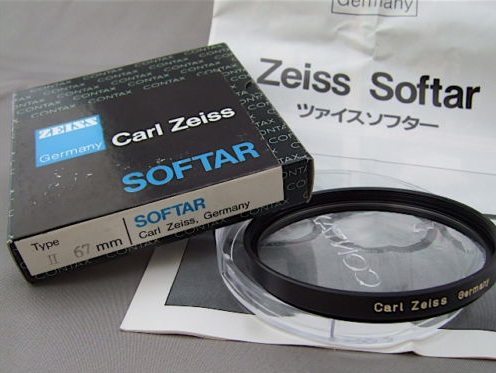
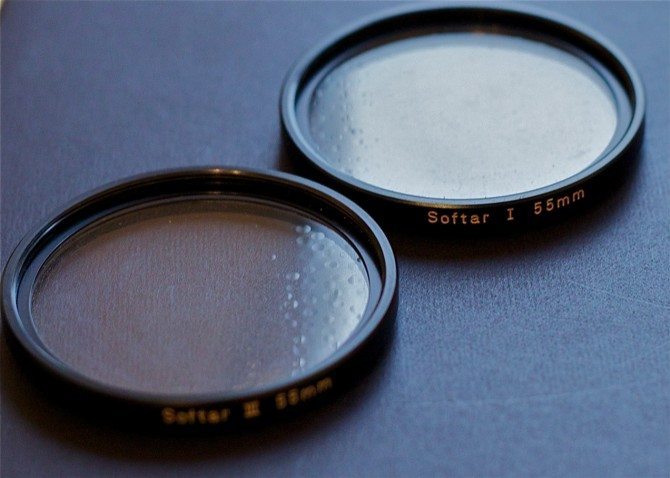
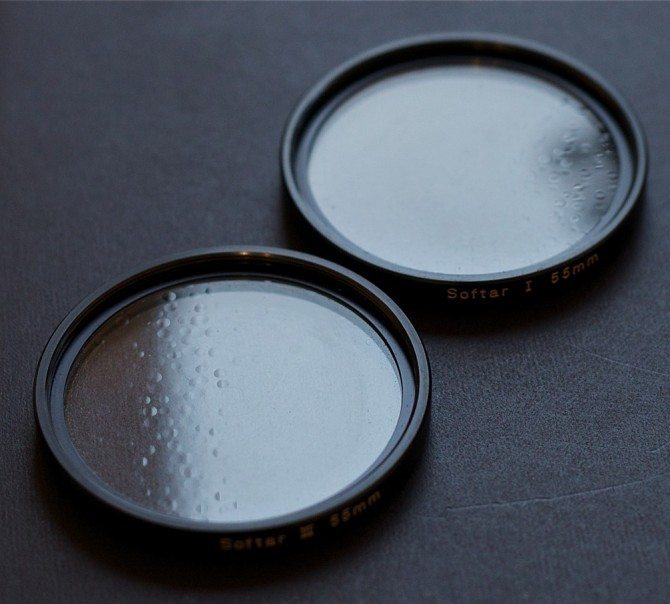
Here are some frame grabs from Spencer with and without the Softar.
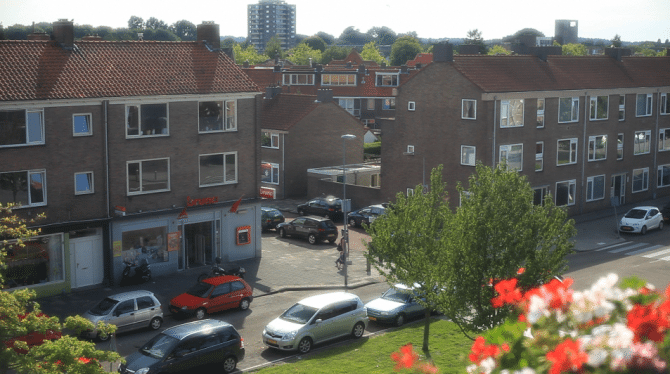
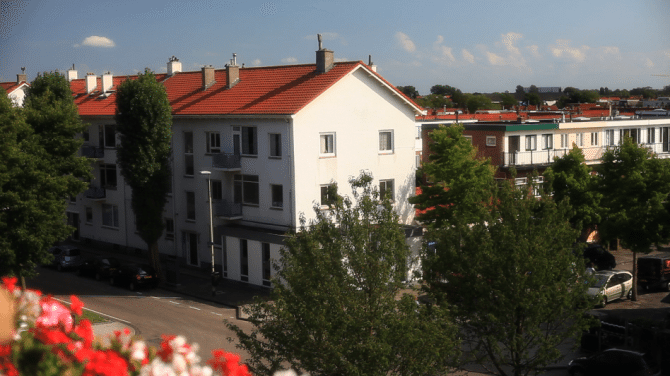

58 comments
wow! thks! this soft filter very nice!!!!!
Would have to see some video first, but I don’t really like the look of the stills … wondering if that footage was overexposed or if the blown highlights on the car (and the sky) were caused by the Softar …
Using older lenses on a DSLR seems to be a better trick. I use mainly M42 lenses from different manufacturers (Mamiya Sekor, Zeiss Jena, Vivitar) which have little to no moiré while still retaining sharpness … and when I do have moiré, moving the focus ring just a tiny bit completely removes it without losing focus …
I’ll try to do some tests later this week to show what I’m talking about.
Interesting! Thanks Philip!
I like that!!!
Tks PB
I have this aliasing problem.. at last there is something decent in the market to solve this problem. what is the price tag on this one?
Interesting info and great to have a fix. But the price to pay for losing the moire seems to be that your footage may take on the ‘Emanuelle’ look.
So by now it is known that the sharper the lens the more extreme the moire will be (if the conditions that will trigger moire are met of course) .There are too many filter options out there to disperse (“soften”) the light that enters the lens and each one of them can be used for various aesthetics.These filters are not like UV’s for moire,they are like special effects,you can not use them in every situation.I’d still like to test them but im pretty positive they will be useless in most if not all occasions.
That’s is great news. I’m sort of hoping these issue will be sorted in the next 5D. In the meantime I’m loving the Panasonic GH1 with no trace of moire or aliasing with the 13 hack.
This is fantastic. Are the last two images both with the Softar or with and without?
Interesting. I wonder what the visible difference is between these and say a Tiffin Black Pro-Mist 1/4 which is what I’ve been using up until now?
interesting, although could you not get the same effect by using magic bullet or some other post effects to add this ‘glow’ and softening later?
applying this in camera cannot be undone later. I have been using old Nikon glass and like Pascal have had good success in eliminating moiré without the use of additional filters.
I too would like to see some video.
I’m guessing this is a taste thing and of course depends on what you’re shooting
Soft is better than moire. cheers Phil
Ok, can I save you a LOT of money ?
20 years ago we made filters like this when I was just starting out.
Once you get past all the ziess BS, its nothing more then a peice of glass with dimples on it. you can make the exact same filter for $10. get any UV / clear filter that fits your lens, then using CLEAR nail polish make little dots. keep the center 1/4 of the filter more or less clear. thats it. super simple.
I’ve been using some 138mm filters from the 70’s with great results too. promists are really the end of the line in the evolution of diffusers… go back to the earlier days and you’ll find some great filters out there that will eliminate or greatly reduce moire.
good info…i will have to buy some nail polish!
Phil, Like you don’t have nail polish. Who you kidding?
can i borrow yours?
(rushes off to the bathroom and opens wife’s cupboard drawer)
I might get them for portrait photography. Not sure I’d buy them as a solution to moire. I’d be interested to hear you findings in this respect, though.
Call me a skeptic but I would think that the nail polish would not be able to achieve the “Don’ts” listed above. You can get pretty cheap soft filters if you like already made but sharpness goes out the window. For somethings this is fine but there is a different in quality of glass.
i am sure you are right
I’d love to see a comparison between these Ziess Softars and the Caprock Anti-Moiré filters. Cost could be a big issue…
me too…although my softar cost about $80 from ebay
I get very little moire with my 24-105 on my 7D. I have the sharpness turned down in the camera.
i get it with that lens…i always turn sharpness all the way off
Hi Philip
thanks again for letting the cat out of the bag. I’m going to try these out. Do you think they might work in combo with a polarising filter? I’m guessing some nice sharp technicolor feeling might materialise?
Hope you’re doing well.
Julian
Bit like Pro Mist aren’t they 🙂
…And that’s already been mentioned lol
I’ve been using a layer of cling wrap on UV filters and/or the lens rear element to help reduce moire. This does reduce your contrast and sharpness overall obviously but not as much as you might think. Costco Kirkland Signature brand seems to have the least amount of blooming/streaking on hard highlights. Frustrating to apply but it does help like any other form of diffusion. I have the Caprock 4×4 filters and rarely find they help unfortunately – even stacked. Thanks for the tips Steve and Philip!
I respect Philip’s work very much, and I appreciate that he shares his knowledge and experiences with us here, but really? I think the results from the stills are highly inconclusive, and this post reads like an advertisement (though I don’t think Zeiss is a sponsor of the blog, are they?). Especially when he hasn’t even tested it himself (yet)! Not to he mention the fact that existing “anti-moire” (not softening) filters exist, but they don’t work worth a damn.
All I can say is, I hope this DOES work! I look forward to his results.
why anonymous?
Anyway just sharing something that was shared with me..
Don’t mind me, Philip, I’m just a student! I don’t know anything 🙂
Can’t wait for your results!
This almost looks like the magic bullet looks filter “unbloom.” I have to buy one of these filters. Not to get rid of the moire effect, but so older ladies stop complaining about how bad their wrinkles look in HD! ; )
Phil what don’t you like about the Black Pro-mist? I’ve had some great results with it in terms of cutting down on Moire.
J
Is there not a filter in FCP/Premiere that will do the same thing? You can just create the same effect in your workflow
i may have missed the point 🙂
doing it in post is not a solutions. we need to remove it at the optical stage
Bloomy filters, tested by Philip Bloom! 😀
Seriously, I’m looking forward to an extensive test of yours!
I hope it doesn’t turn out very ”dreamy” of ”romantic”… (some like that, but I rather see sharp clear images)
i got this tip from…Philip Bloom!
If you’re getting moire, try moving further/closer if you can. Doesn’t always work, can’t do it all the time, but it’s free!
Thanks again Philip!
but it has it’s limitations. harder to get rid of infinity moire
Haha, sorry but I kinda laughed reading this. What about… buying a fantastic vintage lens for less money than the actual FILTER? (Oh wait, don’t btw, prices will go up).
http://www.xtranormal.com/watch/6823505/
enjoy
regards jiri
Hi Philip,
I have been using a secondary OLPF I had made in china the specs are:
Quartz crystal OLPF (AAFilter), 2 layer 0° & 45°cut size 40mm (w) x 25mm (h) x 3.38 with AR coating.
It sits behind the lens in the camera body on a plastic sledge. Installed when the mirror is up. Takes only a couple of seconds to install, works on any lens as its filters the optical image before it hits the rear elements.
You don’t get the blooming softness effects, its not 100% but It knocks the edge off and gives a nice cinematic colour.
I’ll bring this along next Saturday in the Londonia meet.
Here is a film made with this secondary filter.
http://www.vimeo.com/13706907
BR, James
Hi James
The aa filter seems to do a good job
Can you give info on how to find that filter
Pascal
James,
Any additional information you can provide on that OLPF filter would be very helpful. Is it an already-available commercial product, or did you have to also have the plastic sledge custom-made?
An APS-C-sized OLPF that blurs the image enough for DSLR video sounds like it’d be expensive.
This filter creates an interesting look. It would be great if we could see some video of you using this filter. Specifically portraits of someone, so we can see the before/after effects on skin and clothes.
mine hasn’t arrived yet…
james
i am very interested for long long time on a filter like this
were i can get one????
thanks
ram
I would think a simple color noise correction as in Photoshop CS4 or CS5 could clean up most of the color moire issue……not sure if something like this exists
for NLE’s
not for moving images am afraid
Well another filter that’s able to do similar diffusion while maintaining sharpness are Mitchell Diffusion filters. I have been using them for 30 years and they have been around a lot longer than that. Think Mitchell Camera. The construction is really similar, a pattern in the glass not between the glass. The pattern isn’t random but regular but still works and makes older women gorgeous.
Damn I’ll have to try this. I wonder how it’ll work with guitar strings, they’re the biggest issue I’ve encountered so far.
i will try it out so soon
Hi there,
Iam not sure if it helps but i did find something here about moire. Its a german page and he recommands either Black Diffusion Filter from Tiffen or a selfmade moire filter, looks like a black mosquito net.
http://www.hennek-homepage.de/video/video-mit-550d.html
Marc
Dear Philip,
i saw the post of my tests you’d put on your website
nice!
i’d made bad example of a video still from a 1920-1080HD made by the Canon 5DMKII without any filter on it
it was just a day in the city when the rain stopped,
the sky cleared and a rainbow came up
i knew that using no filter whatsoever would result in at least 4 moire patterns on tiles and bricks
I found this link about another way of getting rid of moire with test results
http://www.dvxuser.com/V6/showthread.php?t=200980
http://www.dvinfo.net/forum/canon-eos-7d-hd/480602-controlling-moire-7d.html
Indeed the Caprock filters
I did a test today with ND4 and also changing of the sharpness inside the canon 5dmkii
will send you the results stills from the video using wetransfer.com
findings
my situation:
i live in the tiny country of holland where all is made out of bricks and tiles
most unfortunatly these are everwhere except in nature
i use the canon 5dmkii for hdvideo commercials, virals and the likes
the canon gives me nasty moire patterns when filming masters and wide shots (of the bricks and tiles which appear in all cities)
I searched and found some solutions to get rid of it,
as posted by you on this blog
the first is a softening filter called softar 1 from zeiss, they are in 3 grades: softar 1,2 and 3, they soften but also get rid of the moire which makes my material un useable.
softar 1 is ok
softar 2 a bit softer
softar 3 extreme results
the second i found is to use a ND4 filter,
this gives me the possibilty to get my f stop lower (so shallow dof) and still film in the timing of 180 degrees. so on t45.
the third solution is to lower the sharpness settings inside the camera, in canon 5dmkii that is in live view, choose picture styles, and change the sharpness
ofcourse changing the contrast as well could do but for me that was not part of my test
so my results are as such:
indeed the moire as far as I have seen occurs at a specific resolution in real world environment,
with that i mean : in the test i did with the canon 5dmkii yesterday
from the same point filmed, there was a moire in just 1 bit of the brickwalls in the right side of the frame
when i pointed the focus of the camera on a point closer to the camera:
instead of lets say 50metres, to a point of lets say 15 metres
and using a ND4 to lower the DOF (in the same iso100, timing 45 (180 degrees))
so the depth of field did not reach the point of moire, the result was imminent,
no moire: at that specific point of moire at 50 metres
so using an even more heavy ND, lets say ND4 + ND2= ND6 would bring the f stop all the way to 1.8 or 1.4
resulting in no moire
but when i put the focus on that specific point of moire
the results were dissatisfied, very hard to get rid of the moire at 50metres on the brick walls,
it seems that that specific point on that wall, on that specific distance is kind of the same resolution as the 1920-1080 or of the scanning of the 22MP chip
when turning the focus a bit further or a bit closer (with ND4) the moire disappears
so the moire is, in my opinion, indeed a case of two resolutions: the brick walls at 50metres and the scanning matching very close to each other
softening the frame a bit works
changing the sharpness of the canon works at sharpness 4-5
zooming inside the frame before into recording did not give me a workable result of checking for moire
so even perhaps writing the data down to cf using the compressor may result in a bit of extra moire
indeed a soft or vintage lens, as old lenses are, can make a whole world of difference
in film we would always choose Cooke S4 lenses when Arri/Zeiss were too hard
what i also tested is the order of the filters
when using a softar the best is to have the filter as close to the front lens as possible
the tests i did where with a standard lens : canon 50mm f1.8
this lens has about 15 mm from the filter screw side on the front of the lens to the glass front end of the actual lens itselve
another lens i have is the 50mm carl zeiss 1.4
this lens has only 5mm distance measured from the front of the filter screw side to the front of the lens
the softar will be much closer to the carl zeiss lens than it is right now to the canon lens
what i did was
changing the softar in order
so
1; lens,
2nd:ND4
3th: softar
this is a big difference
too soft and much to sofatr effect
changing the order to
1: lens
2:softar
3: nd4
is a much better result
while the difference in this case is only the screw of the filter itselve,lets say 5mm
changing the filter all the way to the fron of the lens as in case with the carl zeiss would make the filter even less visible
while maintaining the positive results
new canon usm lenses also have their front lens as close as possible to the screw side in front of the lens
spencer
Not to attempt to comment on what is happening technically with the Softar, but at first glance, the grabs are, to me, reminiscent of the DOF adapter look as it’s shot through the ground glass… not a look I’m after.
I disagree. The stuff from my DOF adaptors looked nothing like these. These look pro misty to me whereas my Letus Ultimate/ Extreme stuff was tack sharp with no moire!!
Philip,
Just tested comparing softar vs caprock,
Softar is basically useless with wides ( 11-16, 20-40 ) also useless with 50mm only worked with my 80mm mamiya f1.9 but barely.
Caprock 1.0 works with 11-16mm at 15mm and 20-40mm f2.8. Hazy with 50mm.
I’d conclude this softar is not a good investment.
Ted
Any update on this?
Has anyone noticed a obvious improvement using these filters? I’ve got a big shoot in the next couple of days and I’m deciding whether or not I should pick some up.